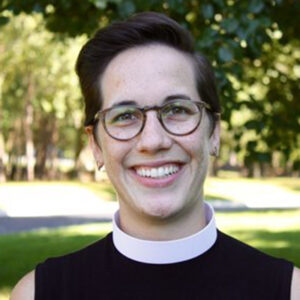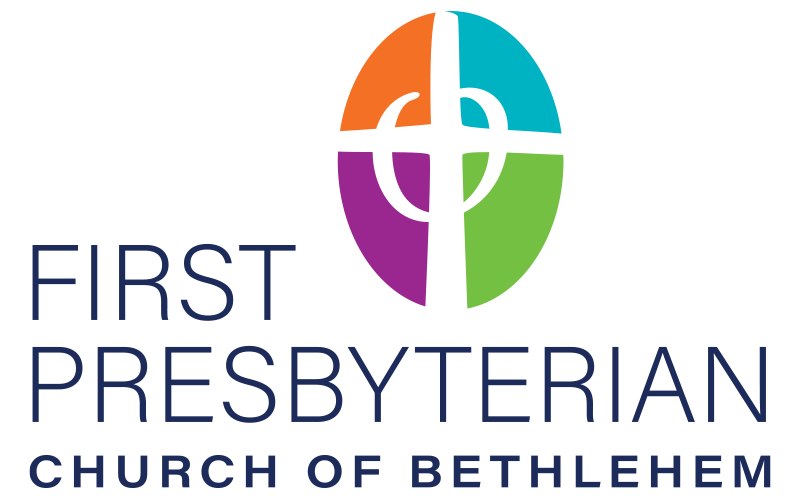As I wrote in this week’s Pastor’s Message, seasons of leadership transition and congregational change can often feel disorienting and anxiety-producing: the stability and security of what has been and what is now both have to be held a bit more loosely as we explore what’s next.
That is perhaps particularly true for us given the  strategic and financial realities shared four weeks ago at the Congregational Meeting. I want to begin by circling back to that to say a few more words about what has become a bit of an elephant in the room—the question about our relationship with this building.
strategic and financial realities shared four weeks ago at the Congregational Meeting. I want to begin by circling back to that to say a few more words about what has become a bit of an elephant in the room—the question about our relationship with this building.
Some folks left that meeting feeling like they’d heard that the Steering Committee had shared with Session and Trustees that we felt like our only option was to let go of the whole property. I want to clear the air and state it as plainly as I can—that is not at all where we are.
We do now know that the South Building alone isn’t enough to offset our operating needs, but we have many other possible options to explore which could support maintaining our connection with this space. And tomorrow night at its monthly stated meeting, Session will hear from the Steering Committee about a suggested framework for exploring alternatives that would help us right-size our relationship with the building while still prioritizing both missional impact and financial sustainability.
We’ll likely be calling another Congregational Meeting in the coming weeks for an update, but hear me loud and clear when I say this—A Future with Hope isn’t just the theme for our Stewardship Season, but rather A Future with Hope is what God promises to us and other wilderness wanders trying to make their way faithfully through change, even in the liminal, in-between space of the complicated, uncertain now and the sure-and-certain future that is to come.
All of that being said, today, we begin our month-long journey with the Israelites through their wilderness wanderings and hear the holy promises which see them through. These promises are our reassurance and our calling to keep walking with God and contributing to the work of Jesus Christ through this congregation. And today, we also hear the promise of resources.
As we encounter the Israelites in the 35-36th chapters of Exodus, they are 5+ months into their wilderness season following being freed from Egyptian slavery. They’ve been sustained by God’s manna from heaven; they’ve received the 10 Commandments and other guidance for living in community with one another and God; they freaked out and broke their covenant with God by creating a golden calf; and God’s covenant with them has been restored. Now they’re about to begin their own Stewardship Season to support building the tabernacle as God has instructed them.
Moses has gathered all the Israelites together and tells them what the Lord has said, “Gather from among you an offering for God. Receive on God’s behalf what everyone is willing to give as an offering.”
After listing all the goods needed—both simple and fine—the text tells us that “everyone in the community of Israel left the presence of Moses. Then they came back, every one whose heart was stirred, whose spirit was willing, bringing offerings to God for building the tent of meeting, furnishing it for worship and making the holy vestments.”
They gather the precious metals, brilliant colored yarns, fine linens, animal skins, wood, oil, incense, and spices, valuable stones and gems. But as one preacher notes, “A key part is not just the amount that people bring (so much that they have to be restrained!), but the spirit in which they give. “Everyone whose heart was stirred,” “everyone whose spirit was willing,” “Everyone who could make an offering” are mentioned multiples times” (Emmy Kegler).
A later verse describes it as a “freewill offering” from those whose hearts were moved. Moved by God, yes, but perhaps more importantly: “This is a people moved by the mission. They know exactly what they are building, what it requires, and what they each might be able to give” (Emmy Kegler).
A spiritual practice of generosity, then, must be linked our mission as people of faith. Theologian, author, and teacher, Henri Nouwen, writes this about matter—
From the perspective of the gospel, [stewardship] is not a response to a crisis. [It] is, first and foremost, a form of ministry. It is a way of announcing our vision and inviting other people into our mission…When we seek to raise funds we are not saying, “Please could you help us out because lately it’s been hard.” Rather, we are declaring, “We have a vision that is amazing and exciting. We are inviting you to invest yourself through the resources God has given you—your energy, your prayers, and your money—in this work to which God has called us.”
What is the work to which God has called First Presbyterian Church, Bethlehem? What is our mission? I invite you to flip back to the front of your bulletin and take a look at the Call to Worship.
Our mission is—
To welcome an inclusive and joyful community of Christ’s followers into
actively exploring how God’s gracious love
gives meaning to our lives and faith
and inspires us to address the needs of our changing world.
Through our learning, service, and grateful worship, God fills us with purpose, compassion, courage, and love.
Which part of that mission most speaks to you and your gifts?—
To welcome an inclusive and joyful community of Christ’s followers?
Actively exploring how God’s gracious love gives meaning to our lives and faith?
Actively exploring how God’s gracious love inspires us to address the needs of our changing world?
Whatever part of the mission feels authentic to your faith and calling, are you most drawn to learning, service, or grateful worship?
Do you feel most filled with purpose, compassion, courage, or love?
The mission is our why, friends. THAT is what motivates us to give. Stewardship “is a very concrete way to make the kingdom of God come about;” it is also an invitation “to participate in the spirit of what we’re about” (Nouwen). “As a form of ministry, [stewardship] is as spiritual as giving a sermon, visiting the sick, or feeding the hungry” (Nouwen).
Like in the Exodus story, we pray that the mission is so clear and compelling that whatever is offered is not just enough, but MORE than enough, for that is God’s promise of resources. Moses eventually has to say to the Israelites, “Woah y’all! Enough. That’s good. Really, you can stop bringing your offerings now… We’ve got it covered.” Can you imagine? That is the potential power of giving in community when everyone’s stewardship is spirit-led and mission- driven.
As you continue to reflect on our mission and your own sense of calling, I also invite you to begin considering what your heart is being stirred to give… Whatever it shall be, may the spirit of God move our hearts to give generously to Christ’s work in the world, and may the spirit of God multiply and expand our modest offerings into an abundant, more-than-enough, transformative gift to be shared with so many others. For that is a future with hope—for us and for the community we’re called to serve! May it be so. This day and each day. Amen.
